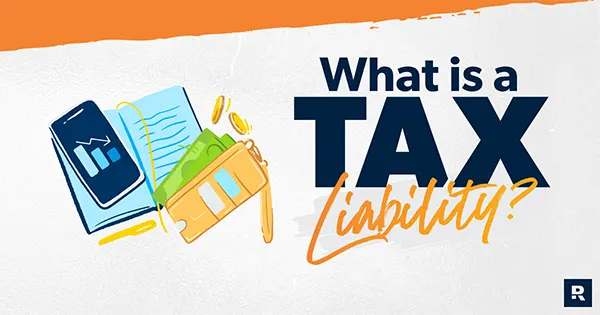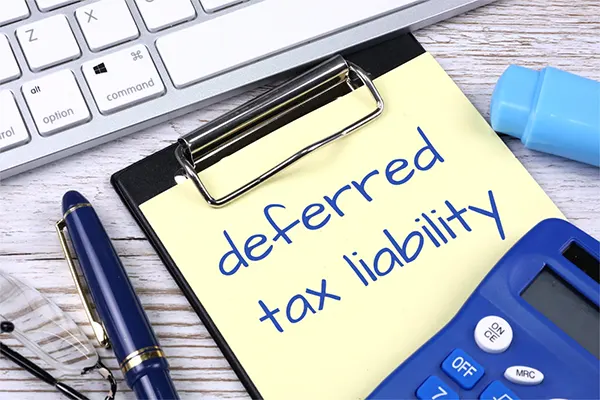What is Tax Liability? Explore Popular Tips to Minimize Your Tax Liabilities
Tax credits, deductions, differences, etc., make tax liability a baffling topic for many, and that’s why I decided to break down the whole thing about what is tax liability.
The US tax authorities levy non-negotiable taxes on your overall income, with the fundamental motive, “earn more and pay more.” So, if you also make thousands of dollars, you’ll certainly have tax liabilities.
But due to the complicated system and constant tax reviewing, handling taxes isn’t easy for a lot of folks.
Hence, I decided to write this blog post to educate my readers about what is tax liability and how to calculate it without headaches.
So, stay tuned!!
What is Tax Liability?

A tax liability is the amount of tax you owe to the Internal Revenue Service (US tax authority). The taxes include the combination of income tax on your earnings, capital gains on your assets, self-employment taxes, and other penalties.
According to the US government, both individuals and businesses are liable to pay taxes on income generated. The taxes can be owed to the local, state, or Federal government.
However, it is possible that you don’t pay tax liabilities to the government when your income doesn’t meet the tax criteria. Millions of Americans with very low incomes don’t file taxes with the US government.
Types of Tax Liabilities

When it comes to tax liability, most people focus solely on income tax. But there are various types of tax liabilities that a resident or business must pay to the government.
Let’s take a look at the different kinds of tax liabilities.
1. Income Tax Liability
Income tax liabilities are the charges you pay based on your yearly income. Besides this, income tax is also divided into three parts: local, state, and federal income taxes. This highlights that you have to pay money from the local to the country level.
However, you are free from state income tax if you live in Alaska, Florida, Nevada, South Dakota, Tennessee, Texas, Washington, or Wyoming. On the contrary, you might owe taxes to the local government and the state in many regions of the US.
2. Sales Tax Liability
Sales tax is a liability incurred by customers during the purchase of goods and services. Exceptionally, Delaware, Oregon, New Hampshire, and Montana have no state sales tax. Alaska doesn’t impose state tax; however, it grants local governments the authority to collect taxes as they desire.
Additionally, businesses that collect sales tax from customers should report revenues and sale figures to the local and state governments. Afterward, they have to make the payment that covers the collected sales tax.
3. Capital Gains Tax Liability
Capital gains are the profits earned from selling physical assets like land and buildings or virtual digital assets like cryptocurrency and stock. Conversely, capital gains tax liability is a fee you pay the US tax authorities during the year an investment is sold.
Furthermore, capital gain taxes are calculated in different parameters according to asset type.
- Short-Term Capital Gains: When you hold an asset for less than a year before selling it. This kind of profit is termed as ordinary income.
- Long-Term Capital Gains: This applies to profits you earned by selling assets you kept for more than a year. The IRS calculates your taxable income and filing status to evaluate your tax rate (0%, 15%, or 20%).
4. Property Tax Liability
Mostly, the owners of real estate properties are liable for property tax. A property tax liability is an assessed fee based on the value of your house or building. It is an annual charge levied by the US government and collected by the local authorities.
Besides this, the money accumulated from property taxes is spent on infrastructure development, including schools, roads, and libraries. Hence, the amount you owe to the government depends on your property and varies from tax rate.
What is Deferred Tax Liability?

Do you own a business? If yes, then it is necessary to understand the concept of deferred tax liability.
A deferred tax liability is an amount that a business owes in taxes but doesn’t have to pay right away. It is a financial obligation that arises due to differences between cash flow statements and tax regulations. The company will pay the taxes once the variances are settled.
For example, a company paid less tax earlier because it received a major tax deduction in the first few years. However, as time passes, the tax deduction lowers, which means the firm now owes more tax. Due to this reason, the differences create a deferred tax liability, meaning the business will pay more tax later.
How to Calculate Your Tax Liability?

After acquiring knowledge on “what is tax liability?” and its different types, you’re all set to learn how to measure it.
Calculating tax liability can be a complex process. So, it’s a good idea to opt for accounting services for startups to ensure your taxes, as well as profits and losses, are managed accurately.
Here, I’ve mentioned the 2025 tax brackets issued by the IRS to understand the calculations of tax liabilities.
Standard deductions for 2025 are:
- $15,000 for single taxpayers.
- $15,000 for married couples paying separately.
- $30,000 for married couples paying jointly.
- $22,500 for heads of households.
Ultimately, these standard deductions are subtracted from your total income, and the remaining amount is taxed by the US government. Apart from this, tax brackets are adjusted annually due to the rise in inflation. That’s why you’ll encounter an increase in taxes every year.
A breakdown of the 2025 tax bracket.
| Tax Rate | Single Filer | Married Filing Separately | Married Filing Jointly | Head of Household |
| 10% | $11,925 or less | $11,925 or less | $23,850 or less | $17,000 or less |
| 12% | Over $11,925 | Over $11,925 | Over $23,850 | Over $17,000 |
| 22% | Over $48,475 | Over $48,475 | Over $96,950 | Over $64,850 |
| 24% | Over $103,350 | Over $103,350 | Over $206,700 | Over $103,350 |
| 32% | Over $197,300 | Over $197,300 | Over $394,600 | Over $197,300 |
| 35% | Over $250,525 | Over $250,525 | Over $501,050 | Over $250,500 |
| 37% | Over $626,350 | Over $375,800 | Over $751,600 | Over $626,350 |
How to Reduce Your Tax Liability?

Whether you’re a single taxpayer or a business owner, you can reduce your tax liabilities by employing some great tips. Here are some strategies that will help you deduct from your tax bills.
1. Claim Tax Deductions
Firstly, keep a detailed record of all expenses related to personal and business in bookkeeping. Consider debit and credit payments separately to properly calculate expenses when filing taxes.
If you own a startup with insufficient accounting knowledge, always prioritize professional software for better management. Deductions can reduce your taxable income, which directly minimizes your tax rate.
2. Adjust Payroll Exemptions
Complete an IRS W-4 form so that your employer accurately withholds the federal income tax from your pay. Adjust your withholding amount correctly to avoid paying overtaxes.
However, as an employer, you can opt for payroll accounting services to maintain everyone’s income for withholding income taxes. In addition, the IRS also has a tax withholding estimator to ensure that you don’t pay too much or too little.
3. Contribute to Retirement Plans
One of the lucrative decisions to reduce tax liabilities is to invest in retirement. You have to contribute to a 401(K)s and reduce your taxable income according to traditional IRAs.
Additionally, it is a great concept to save for your future plans. However, payments to Roth IRAs funded with post-tax dollars don’t reduce your taxable income.
4. Donate to Charity
When you’re giving away your money and other assets for charity, it is not enumerable as taxable income. Charity donations are a great way to lower your tax bill and support society with valuable donations.
Essentially, it is important to have proper documentation of your donations because you only deduct taxes through legal formalities. Therefore, you must submit donations while filing for tax liabilities instead of standard deductions.
The Bottom Line
With the aforementioned information, I’ve tried to simplify what is tax liability and how critical it is. Remember that, if you earn money in any country, you will definitely have tax liabilities there.
Your federal tax liability is the amount of money you owe to the IRS. Basically, add all your income and subtract it from standard deductions, and the remaining amount will be your taxable income.
However, if you are a business owner and deal with complex transactions, I recommend hiring professional experts to manage your financial records smoothly.
Visit us: Book keeping service
Frequently Asked Questions
Ans: A tax liability is the amount of tax owed to the government by individuals, corporations, and other entities.
Ans: If your income is low enough and doesn’t meet the tax bracket criteria, you won’t have any tax liability at all.
Ans: A federal income tax liability is the total money an individual or business owes to the federal government based on taxable income.
Ans: The tax authorities charge penalties and other interests on your tax liabilities until taxes are fully paid.
Sources: